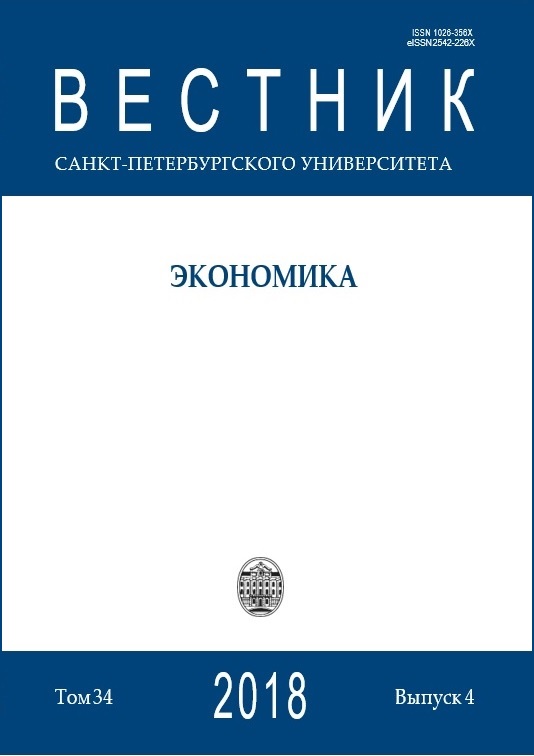Analyzing dynamics and forecasting real effective exchange rates for BRICS countries (1994–2016)
DOI:
https://doi.org/10.21638/spbu05.2018.405Аннотация
В статье проведен анализ динамики индексов реальных эффективных обменных курсов валют стран BRICS и евровалют (на примере USD и GBP). Методологической основой анализа поведения валют является модификация кейнсианской теории трех рынков с включением в нее Forex. Полученные данные выявили закономерности поведения валют BRICS за 1994–2017 гг. Подтверждена зависимость курсов экспортно-ориентированных экономик от конъюнктуры международных рынков реальных и финансовых активов. Показана высокая волатильность валют (в среднем 50 % по группе) в зоне до величины индекса BIS real effective exchange rate (REER) = 100 (CPI-Base 2010). Показано, что в долгосрочном фундаментальном анализе (1994–2017) валюты BRICS демонстрируют рост стабильности. При этом валютный режим фиксированного курса (на примере юаня) был более эффективен в период становления национального сегмента глобальной экономики. Для технического, краткосрочного анализа курсовые тренды «вниз» отражают дебютные трудности вхождения экономик и финансов BRICS в глобальную финансово-экономическую среду. Высокая турбулентность и волатильность REER стран BRICS в диапазоне 60–130 % являлась результатом влияния глобального кризиса 2008–2009 гг. и нефтяных шоков 2014–2015 гг. Нахождение REER главным образом в зоне ниже индекса 100 % отражает низкую корпоративную и глобальную конкурентоспособность экономик BRICS, слабость публичных и корпоративных финансов, нестабильность валют. Исследование дает прогноз долгосрочного тренда усиления стабильности валют как результат повышения эффективности национальных экономик, создания финансовой инфраструктуры BRICS: New Development Bank (capital $100 bln) and Pool Contingent Reserve Arrangement (startup capital $100 bln), увеличение доли национальных валют во взаимных расчетах. На примере BIS REER для валют стран БРИКС показана возможность построения краткосрочного прогноза динамики REER, основанного на модели полиномиальных остатков и статистическом моделировании. Результаты моделирования краткосрочной динамики REER могут быть использованы для прогнозирования поведения валют, хеджирования участников внешнеэкономической деятельности и валютной политики центральных банков.
Ключевые слова:
страны БРИКС, валюты, эффективные обменные курсы, BIS REER, фундаментальный анализ, волатильность, среднесрочное прогнозирование
Скачивания
Библиографические ссылки
References in Latin Alphabet
Загрузки
Опубликован
Как цитировать
Выпуск
Раздел
Лицензия
Статьи журнала «Вестник Санкт-Петербургского университета. Экономика» находятся в открытом доступе и распространяются в соответствии с условиями Лицензионного Договора с Санкт-Петербургским государственным университетом, который бесплатно предоставляет авторам неограниченное распространение и самостоятельное архивирование.







